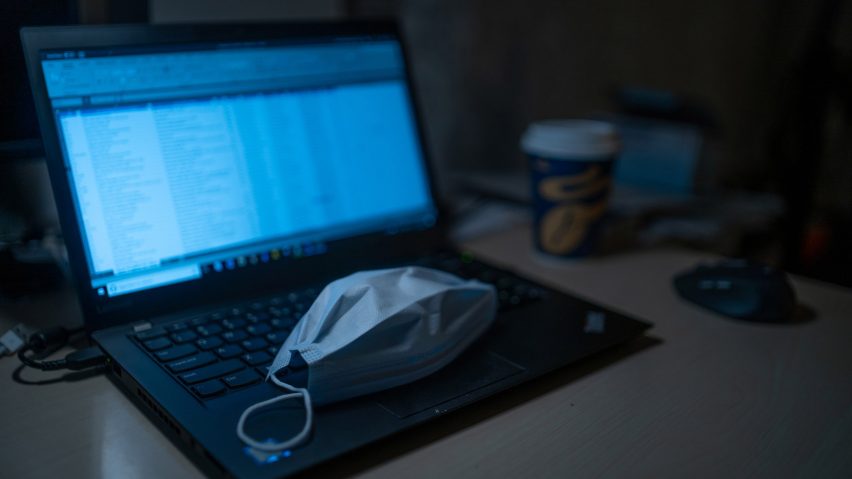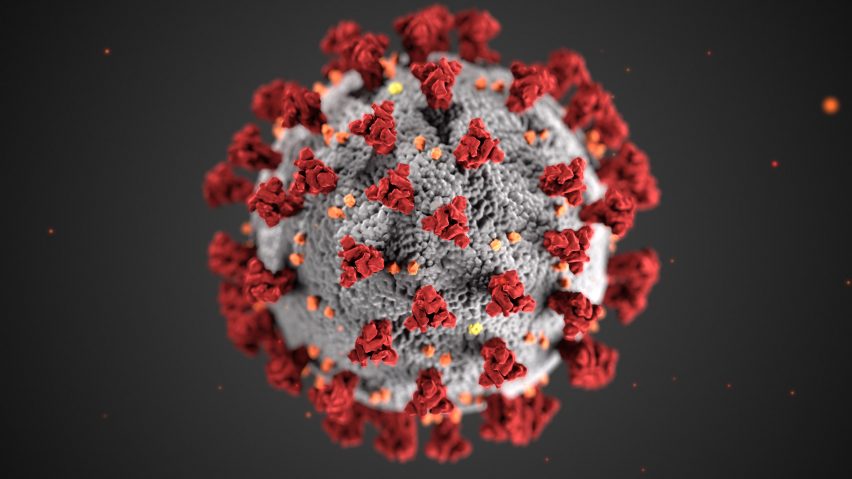
Software creates computer hive mind to help find coronavirus cure
The Folding@home project at Stanford University allows users to donate unused computer power to run simulations of how the novel coronavirus is structured, in order to help find a cure.
Previously, the initiative has focused on modelling diseases such as Alzheimer's and breast cancer.
Now Folding@home has turned its attention to coronavirus, also known as SARS-CoV-2, which has infected almost 335,000 people across 190 countries.

"A lot of people are going to suffer, and even die, until someone finds vaccines or therapeutics for the virus," said Folding@home director Professor Greg Bowman.
"We, collectively as a species, should be trying every possible avenue to find treatments," he told Dezeen.
"My lab and collaborators have been working on a number of viruses recently, especially Ebola, and expect the same approaches will be equally applicable to SARS-CoV-2."
Software turns computers into hive mind
The project is based on a distributed computer system, meaning it draws on the dormant processing capabilities of numerous computers.
The computers are connected into a kind of hive mind via downloadable software, allowing the system to run calculations with greater speed and efficiency than any individual device.
This is necessary to do the complex work of simulating how the proteins that make up the novel coronavirus behave and where there could be potential binding sites for drugs to latch on to.
The protein structures, which a virus uses to reproduce and suppress our immune system, are bound together in a process called folding. Crucially, this structure isn't stagnant but continually folding and unfolding.
"We’re simulating how every atom in the protein moves as time progresses," said Bowman.
"To do this, we have a model of what the protein looks like and keep asking over and over: where is each atom in the protein going to be at a point in the future, given how all the atoms in the protein are pushing and pulling on each other?"
Simulations require lots of processing power
These simulations take a huge amount of computational power.
According to Bowman, simulating a single protein could take between a hundred and millions of years if executed on a single desktop computer.
"We’ve developed algorithms for breaking these enormous calculations into lots of small pieces that can be run in parallel on different computers," he said.
"Think of it as trying to explore a new planet by having one astronaut walk around, versus having lots of astronauts fan out and explore different parts of the planet. In this analogy, the astronauts are the simulations and the planet is the set of different shapes that a protein can adopt as all of its parts move about."
Race to discover how drugs can bind to the virus
Through these simulations, Bowman's team is hoping to identify where drugs could bind to the virus' proteins in order to disrupt them.
"We call these sites 'cryptic' pockets and have made a lot of progress on finding them in simulations and then experimentally confirming that they exist to provide new opportunities for drug design," he explained.
So far, the team has already managed to find a few promising cryptic pockets. Now they are working with experimental collaborators to help design small molecules that may target the virus' different proteins.
"Each simulation is like buying a lottery ticket"
Any data gathered through the project will also be shared with laboratories around the world as part of an open science collaboration, to power research into how we might develop therapeutic antibodies.
"Open sourcing our data is the intellectual equivalent of our distributed computing paradigm," said Bowman.
"Hypothetically, our labs can extract all the useful information from these simulations. But if a lot of people look at the data, we can get all the useful information more quickly."
Although computers with powerful graphics processing units for use in gaming or mining cryptocurrency are the most effective, even older, slower laptops can help by downloading the software from the Folding@home website and selecting to contribute to "Any Disease".
"Each simulation is like buying a lottery ticket," said Bowman. "The more machines and the faster they are, the more tickets we can buy and the better chance we have of beating the virus."
On Friday, the World Health Organisation launched a global trial of four possible treatments that have so far been deemed the most promising.
Among these is the malarial medications chloroquine, which US President Donald Trump falsely claimed had already been approved for use in treating the coronavirus.
His statements led multiple people to self-administer the drug, including an elderly man in Arizona as well as three people in Nigeria, who overdosed and subsequently died.
In lieu of a cure, many designers have turned to devising products that could instead help to contain the spread of the coronavirus, such as a sterilising lamp, an electrically-charged, graphene face mask and a full-body shield powered by UV light.